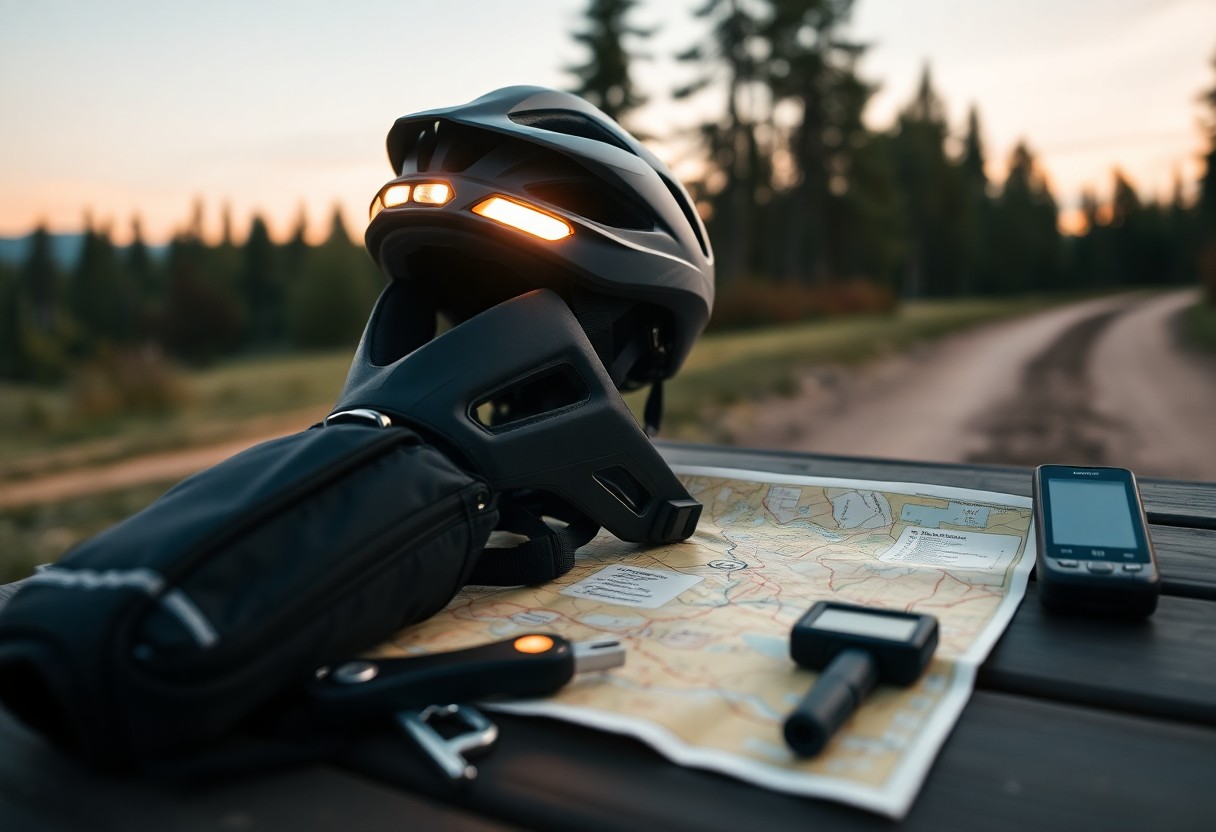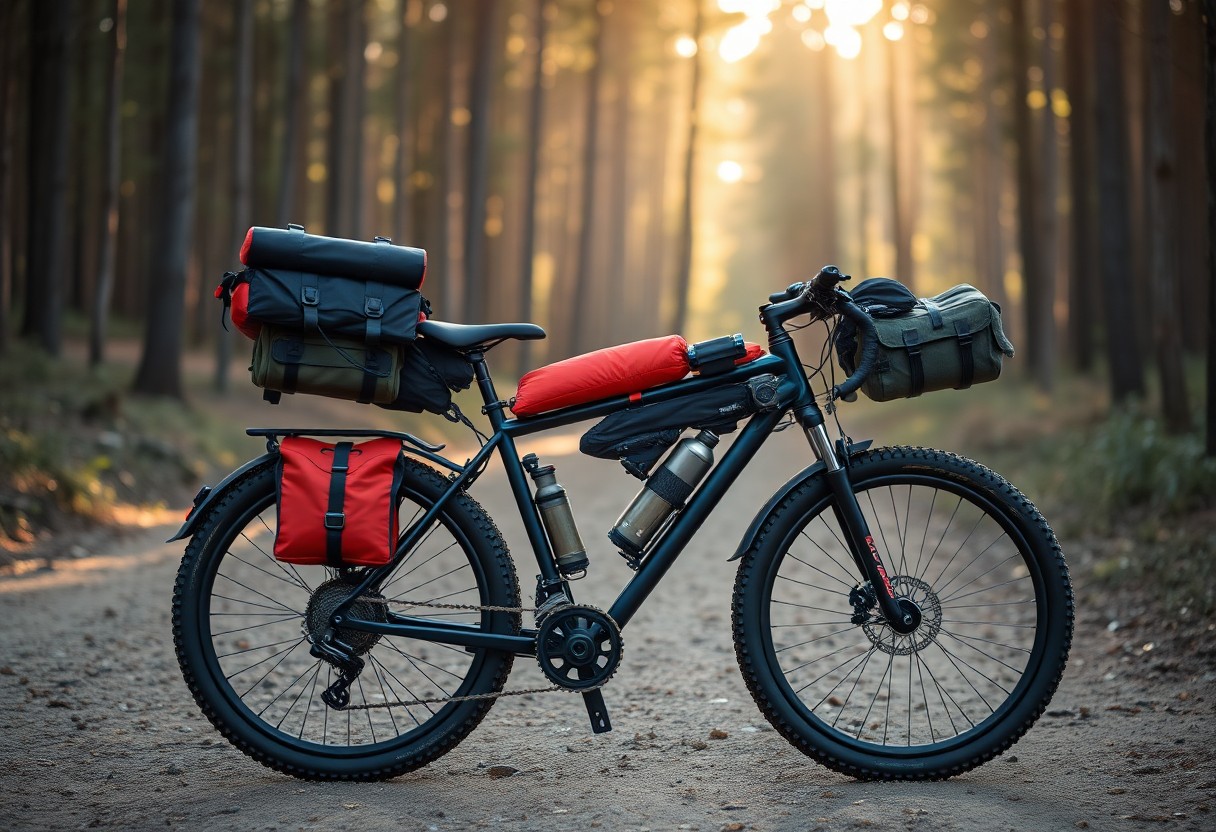Just initiateing on your bikepacking journey can be both exciting and daunting. You need to be equipped with not only the right gear but also the knowledge to ensure a safe and enjoyable experience. Familiarising yourself with route planning, camping necessarys, and proper bike maintenance is vital to navigating the great outdoors effectively. This guide aims to provide you with all the fundamental insights to kick-start your bikepacking adventure, ensuring you’re well-prepared for the challenges and rewards that await you on the road less travelled.
Selecting Your Bike: Beyond the Basics
Your choice of bike goes well beyond the initial decision of type and size. Comfort, fit, and specific features can significantly enhance the bikepacking experience. Consider how often you’ll be riding on various terrains — these elements will alter your needs. Testing a bike for handling and the ability to carry weight on rugged trails, rather than just flat roads, is vital for an enjoyable journey. Thou will soon realise that a well-chosen bike can make all the difference in tackling any adventure you initiate upon.
Types of Bikes for Bikepacking
- Touring bikes – Designed for long distances, these are sturdy and can carry heavy loads.
- Gravel bikes – Versatile bikes tailored for a mix of pavement and off-road, they’re great on varied terrains.
- Mountain bikes – Ideal for rugged trails and inclines, providing enhanced control on uneven ground.
- Hybrid bikes – A compromise between road and mountain bikes, suitable for suggestive paths.
- Electric bikes – Offering pedal assistance, these can make hill climbs easier and reduce overall fatigue.
Essential Bike Features for Beginners
Several key features will help you navigate the basics of bikepacking effectively. Depending on your riding preferences, certain specifications may enhance your comfort and performance. Look for bikes with a sturdy frame, reliable gears, and a solid braking system. Wider tyres often offer stability and better grip. Additionally, consider integration for racks and panniers for gear storage, especially on prolonged trips. Thou will find that understanding these features can greatly impact your cycling adventure.
Focussing on vital bike features, pay special attention to a few specifications that can elevate your bikepacking journey. A frame designed for comfort—such as a relaxed geometry—will allow longer rides without strain. Reliable gears are vital to tackle various terrains without burnout, while hydraulic disc brakes offer consistent stopping power regardless of weather. A bike equipped with mounting points for racks and fenders helps accommodate your gear. Tyre width plays a significant role too; wider tyres are typically more forgiving on uneven surfaces, ensuring a smoother ride. Ultimately, a well-thought-out bike built for your own needs will lead you to enjoy many breathtaking landscapes along the way.
Gear Essentials: What You Can’t Go Without
Your bikepacking adventure hinges on the right gear. Tackling varying terrains requires not only a quality bike but also vital accessories that keep you comfortable and safe. A durable tent, sleeping bag, and a multitool for on-the-go repairs should top your list. Don’t forget to pack a reliable water filtration system and lightweight cooking gear, as staying hydrated and well-fed are key to maintaining your energy on the trail.
The Right Clothing for All Weather
Selecting appropriate clothing can make or break your experience. Aim for a combination of moisture-wicking, breathable layers that can adapt to changing weather conditions. A waterproof jacket is a must-have for sudden downpours, while padded shorts help cushion long sits in the saddle. Always consider thermal layers for cooler nights, and don’t overlook a good pair of cycling gloves to keep your hands comfortable.
Critical Camping and Cooking Equipment
Camping and cooking equipment form the backbone of your bikepacking toolkit. A compact tent or bivvy bag provides shelter, while lightweight cooking systems—such as a portable stove and fuel—enable easy meal prep. Select freeze-dried meals for convenience and nutrient-dense snacks to keep your energy levels up. A sturdy pot and basic utensils can elevate your cooking game, making even the simplest meals a delight under the stars.
An efficient cooking setup often includes a multi-fuel stove that allows versatility in different environments. Consider adding a lightweight pot that doubles as your eating dish, minimising extra weight on your bike. Additionally, solar-powered chargers ensure you keep your devices powered while you’re out exploring. The right camping gear not only enhances comfort but also ensures safety and flexibility, allowing you to adjust quickly to unpredictable demands on your journey.
Navigating the Trails: Planning Your Route Wisely
Planning your bikepacking route involves more than just selecting a destination; it’s about understanding the landscape, your capabilities, and potential obstacles along the way. Begin by identifying waypoints that align with your skill level and the type of terrain you favour. Consider factors like weather conditions, altitude changes, and available amenities such as water sources and campsites. A well-planned route will not only enhance your experience but also ensure your safety throughout your adventure.
Tools and Apps for Route Planning
Utilising the right tools and apps can streamline your planning process significantly. Platforms like Komoot and Trailforks enable you to discover popular routes, while GPS apps such as Strava can help track your progress and performance. Downloading offline maps with Google Maps or Maps.me ensures you remain orientated even in remote areas where signal might be weak, providing peace of mind as you explore.
Understanding Terrain and Local Regulations
The terrain you choose to navigate significantly impacts your bikepacking experience. Inform yourself about the trails’ terrain types, which can vary from gravel paths to rocky climbs, each requiring different skills and equipment. Additionally, local regulations often dictate where you can ride and camp. Areas like national parks may have specific guidelines to follow, while some trails might prohibit camping altogether, so always verify rules before initiateing.
Understanding terrain and local regulations can greatly enhance your experience on the trails. For instance, familiarising yourself with the types of trails—be they single track, double track, or paved—will inform your bike selection and gear requirements. If you’re venturing into protected areas, be aware of regulations concerning wildlife, campfires, and the use of paths, as many parks enforce leave-no-trace principles. Ignoring these rules could result in fines, ruining your adventure before it even begins. Equipped with this knowledge, you’ll confidently navigate the best paths while respecting the natural environment.
Packing Smart: Strategies for Efficiency
Efficiency in packing can make or break your bikepacking experience, allowing you to focus on the journey rather than the weight on your back. Prioritising your needs and understanding the crucial items can keep your load light while ensuring that you are adequately prepared for various situations. Employing strategies such as layering clothing, grouping similar items, and leaving behind anything non-crucial will enable you to maximise space and minimise weight, creating a more enjoyable ride.
Weight Distribution and Packing Order
Achieving a balanced bike is key to enhancing your stability and handling on the trails. Distributing weight evenly between your front and rear panniers, as well as keeping heavier items low and closer to the frame, will maintain your bike’s centre of gravity. Place frequently used gear, like snacks or a water bottle, accessible at the top or side to save you from rummaging through your bags often.
Choosing the Right Bags and Accessories
Selecting appropriate bags and accessories can vastly affect your bikepacking efficiency and comfort. Opt for lightweight, durable materials like nylon or polyester for your panniers to minimise bulk. Consider a mix of frame bags, saddle bags, and handlebar bags, as they each serve unique purposes. Investing in bags with built-in organisational features helps keep your items tidy, reducing stress and making it easier to find what you need.
When choosing bags, think about the specific challenges you will face on the trails. For instance, waterproof bags can be invaluable in rainy conditions, while specialised frame bags can fit your bike’s contours, optimising space. Look for detachable accessories that can adapt to your needs, such as a multi-tool or detachable front bag for quick access to crucials. Ultimately, choosing the right selection based on your route and riding style allows you to ride with confidence and ease.

Safety First: Skills and Precautions to Consider
Safety should always be at the forefront of your bikepacking adventures. Understanding the risks associated with outdoor travel is crucial. Familiarise yourself with your route, weather conditions, and local terrain. Moreover, practising crucial skills, such as navigation and first aid, will enhance your confidence. Ensuring you’re equipped with the right gear and knowledge can turn potential hazards into manageable challenges, allowing you to focus on enjoying the journey.
Basic Bike Maintenance and Repair Skills
Being self-sufficient with basic bike maintenance can save you from unexpected setbacks. Learn to fix a flat tyre, adjust your brakes, and lubricate your chain. Familiarity with these tasks empowers you to handle problems as they arise on the road. Carry crucial tools, like a mini pump and multi-tool, so you’re prepared for any mechanical issues.
Essential Safety Gear and Practices
Having the right safety gear can significantly impact your bikepacking experience. A good-quality helmet, bright clothing, and front and rear lights improve your visibility and protection on the road. Invest in a first-aid kit, emergency blanket, and a multi-tool to handle unforeseen incidents. It’s wise to inform someone about your route and expected return time, ensuring someone is aware of your plans in case of emergency.
Practising safety while bikepacking extends beyond gear; it involves making sound decisions based on your environment. For example, carrying a whistle can aid communication if you find yourself in distress. Always assess your surroundings for potential dangers, such as wildlife or unstable terrain. Additionally, learning basic first aid can equip you to address minor injuries swiftly. Empower yourself with knowledge and preparation, so you can fully embrace the adventure ahead, knowing you’re set up for a safe journey.
Conclusion
Taking this into account, bikepacking can be an incredibly rewarding adventure for you, allowing you to explore new terrains and enjoy the outdoors. By equipping yourself with the right gear, planning your routes, and understanding necessary techniques, you can ensure a successful and enjoyable experience. Embrace the journey, adapt to challenges, and let your bikepacking excursions enrich your sense of adventure while fostering a deeper connection with nature.
